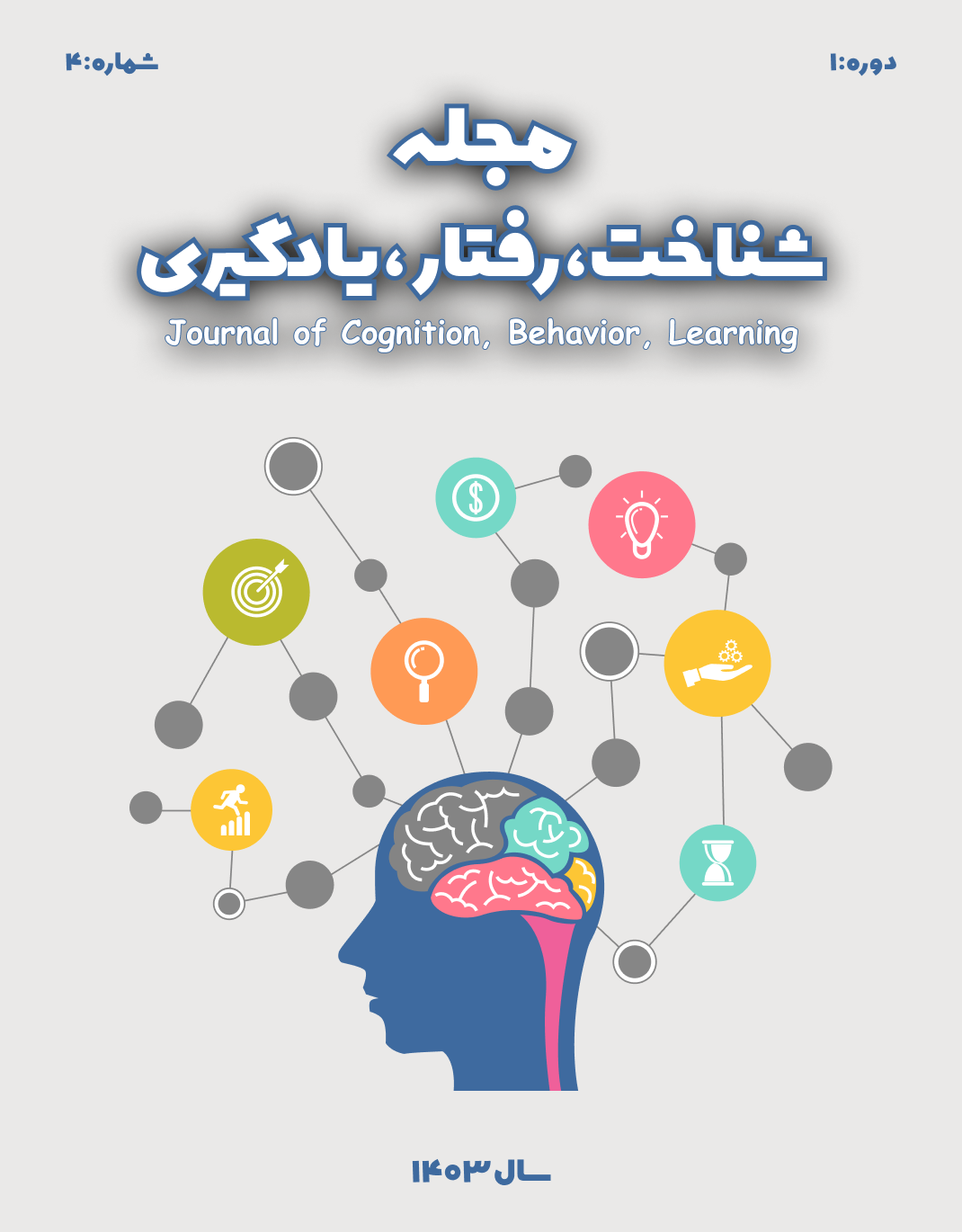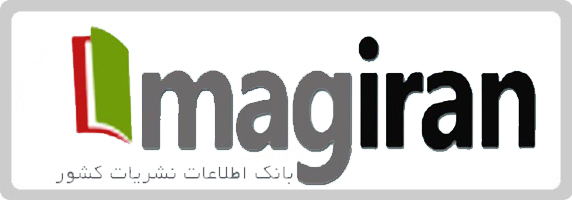تعیین اثربخشی درمان ایمانمدار-پرهیزمدار برخودکارآمدی و تاب آوری معتادان تحت درمان شهرکرمان
کلمات کلیدی:
درمان ایمانمدار, پرهیزمدار, خودکارآمدی, تاب آوری, معتادانچکیده
پژوهش حاضر به دنبال تعیین اثربخشی درمان ایمانمدار-پرهیزمدار برخودکارآمدی و تاب آوری معتادان تحت درمان شهر کرمان در سال 1403 بوده است. روش پژوهش حاضر نیمه آزمايشی از نوع پیش آزمون پس آزمون با گروه کنترل می باشد. جامعه آماری اين پژوهش شامل تمام مددجویان درحال ترک با سابقه مصرف حداقل يکی از مواد به جز نیکوتین و الکل بودند که در مراکز درمانی شهر کرمان با پروتکل ایمانمدار-پرهیزمدار در سال 1403 مقیم و حسب بازه زمانی اجرای پژوهش به تعداد 420 نفر بوده اند. نمونه پژوهش شامل 40 نفر از این افراد بودکه با روش نمونه گیری تصادفی خوشه ای از معتادین تحت درمان از یکی از مراکز ایمانمدار-پرهیزمدار شهر کرمان انتخاب گردید و به طور تصادفی در دو گروه آزمايش و گواه جايگزين شدند.گروه آزمایش بسته درمانی ایمانمدار-پرهیزمدار را دریافت کرده و گروه کنترل فقط درلیست انتظار دریافت بسته درمانی قرارگرفت. ابزارهای این پژوهش پرسشنامه خودکارآمدی شرر (1982) و پرسشنامه تاب آوری کانر-دیویدسون (2003) بوده است. نتایج آزمون تحلیل کواریانس و یافتههای پژوهش حاضر نشان داد که درمان ایمانمدار-پرهیزمدار اثربخشی بالایی در ارتقای ابعاد مختلف خودکارآمدی در معتادان دارد. به ویژه بیشترین تأثیر این درمان بر مولفه پافشاری در ناکامی و استرس ظاهر شده است. همچنین درمان ایمانمدار-پرهیزمدار با اندازه اثر بالا، موجب ارتقای معنادار تابآوری در معتادان شده است. بالاترین اثربخشی در خرده مقیاس معنویت مشاهده شد؛ این روند با منطق درمان ایمانمحور و تاکید آن بر پایداری روانی و انگیزش معنوی همراستا است. بنابراین، استفاده از این رویکرد، به ویژه در تقویت خودکارآمدی و تابآوری رفتاری و مقابله با ناامیدی، توصیه میگردد.
دانلودها
مراجع
Abdi Zarrin, S., & Mahdavi, H. (2018). The effectiveness of cognitive-behavioral therapy on self-efficacy and resilience of addicts referred to addiction treatment camps in Behshahr [Master's thesis, Qom University]. Qom, Iran. https://ganj.irandoc.ac.ir/#/articles/60fe23381e222d405bb4e9c9a1dd3888
Aghayousefi, A., Alipour, A., & Oraki, M. (2020). Comparing the effects of combined cognitive behavioral therapy and methadone therapy with the association of narcotics anonymous addicts on executive functions of quitting drugs volunteer addicts in Jiroft. Journal of Jiroft University of Medical Sciences, 7(2), 366-373. http://journal.jmu.ac.ir/article-1-352-en.html
Alipour, F. (2015). The Efficacy of Therapeutic Community on Executive Function, Autobiographical Memory and cognitive emotion regulation in Stimulant Addicts Kharazmi University]. http://publisher.dchq.ir/storage/2022-01-27/EN35_8.pdf
Anderson, J. D., Wagovich, S. A., & Hall, N. E. (2006). Nonword repetition skills in young children who do and do not stutter. Journal of Fluency Disorders, 31(3), 177-199. https://doi.org/https://doi.org/10.1016/j.jfludis.2006.05.001
Chireh, M., Shakerinia, I., & Yahyaei, G. (2022). The effectiveness of cognitive-behavioral therapy on self-efficacy and resilience in male addicts attending addiction treatment camps in Tehran province [Master's thesis, Koushyar Higher Education Institute]. Tehran, Iran. https://ganj.irandoc.ac.ir/#/articles/b7db0b13cc2d04fbfa4e78453f2b7d26
Darbani, S. A., & Parsakia, K. (2023). Investigating the effectiveness of strength-based counseling on adolescent resilience. Journal of Adolescent and Youth Psychological Studies (JAYPS), 4(5), 169-175. https://doi.org/10.61838/kman.jayps.4.5.16
Farhadian, M., Akbarfahimi, M., Abharian, P. H., Hosseini, S. G., & Shokri, S. (2017). Assessment of executive functions in methamphetamine-addicted individuals: Emphasis on duration of addiction and abstinence. Basic and Clinical Neuroscience, 8(2), 147. https://doi.org/http://dx.doi.org/10.18869/nirp.bcn.8.2.147
Janse van Rensburg, M. N. S., Casteleijn, D., & Scheibe, A. (2024). Evaluating client functioning in a harm reduction program in South Africa: insights from a tool derived from the International Classification of Functioning, Disability and Health [Brief Research Report]. Frontiers in Rehabilitation Sciences, Volume 5 - 2024. https://doi.org/10.3389/fresc.2024.1445176
Kadden, R. M., & Litt, M. D. (2011). The role of self-efficacy in the treatment of substance use disorders. Addictive behaviors, 36(12), 1120-1126. https://doi.org/https://doi.org/10.1016/j.addbeh.2011.07.032
Khansari, A., Jafari Harandi, R., & Abdi Zarrin, S. (2019). The effectiveness of the twelve-step NA program training on resilience and self-efficacy of NA members in Qom City [Master's thesis, University of Qom]. Qom, Iran. https://ganj.irandoc.ac.ir/#/articles/a64ff732cb20ad9b5040a0da828f0f38
Koob, G. F., & Volkow, N. D. (2016). Neurobiology of addiction: a neurocircuitry analysis. The Lancet Psychiatry, 3(8), 760-773. https://www.thelancet.com/journals/lancet/article/PIIS2215-0366(16)00104-8/
Lee, M. Y., Lee, B. H., Kim, H. Y., & Yang, C. H. (2021). Bidirectional role of acupuncture in the treatment of drug addiction. Neuroscience & Biobehavioral Reviews. https://doi.org/https://doi.org/10.1016/j.neubiorev.2021.04.004
Marchette, R. C., Vendruscolo, L. F., & Koob, G. F. (2025). The Dynorphin/-Opioid Receptor System at the Interface of Hyperalgesia/Hyperkatifeia and Addiction. Current Addiction Reports, 12(1), 11. https://doi.org/https://doi.org/10.1007/s40429-025-00618-x
Marlatt, G. A., Blume, A. W., & Parks, G. A. (2001). Integrating harm reduction therapy and traditional substance abuse treatment. Journal of Psychoactive Drugs, 33(1), 13-21. https://doi.org/https://doi.org/10.1080/02791072.2001.10400463
Monroe, S. C., & Radke, A. K. (2023). Opioid withdrawal: role in addiction and neural mechanisms. Psychopharmacology, 240(7), 1417-1433. https://doi.org/https://doi.org/10.1007/s00213-023-06370-2
Yang, C., Zhou, Y., Cao, Q., Xia, M., & An, J. (2019). The relationship between self-control and self-efficacy among patients with substance use disorders: resilience and self-esteem as mediators. Frontiers in Psychiatry, 10, 388. https://doi.org/https://doi.org/10.3389/fpsyt.2019.00388
دانلود
چاپ شده
ارسال
بازنگری
پذیرش
شماره
نوع مقاله
مجوز
حق نشر 2025 خسرو احمدزاده شهیدیان (نویسنده); میترا کامیابی (نویسنده مسئول); حمید ملایی زرندی (نویسنده)

این پروژه تحت مجوز بین المللی Creative Commons Attribution-NonCommercial 4.0 می باشد.





